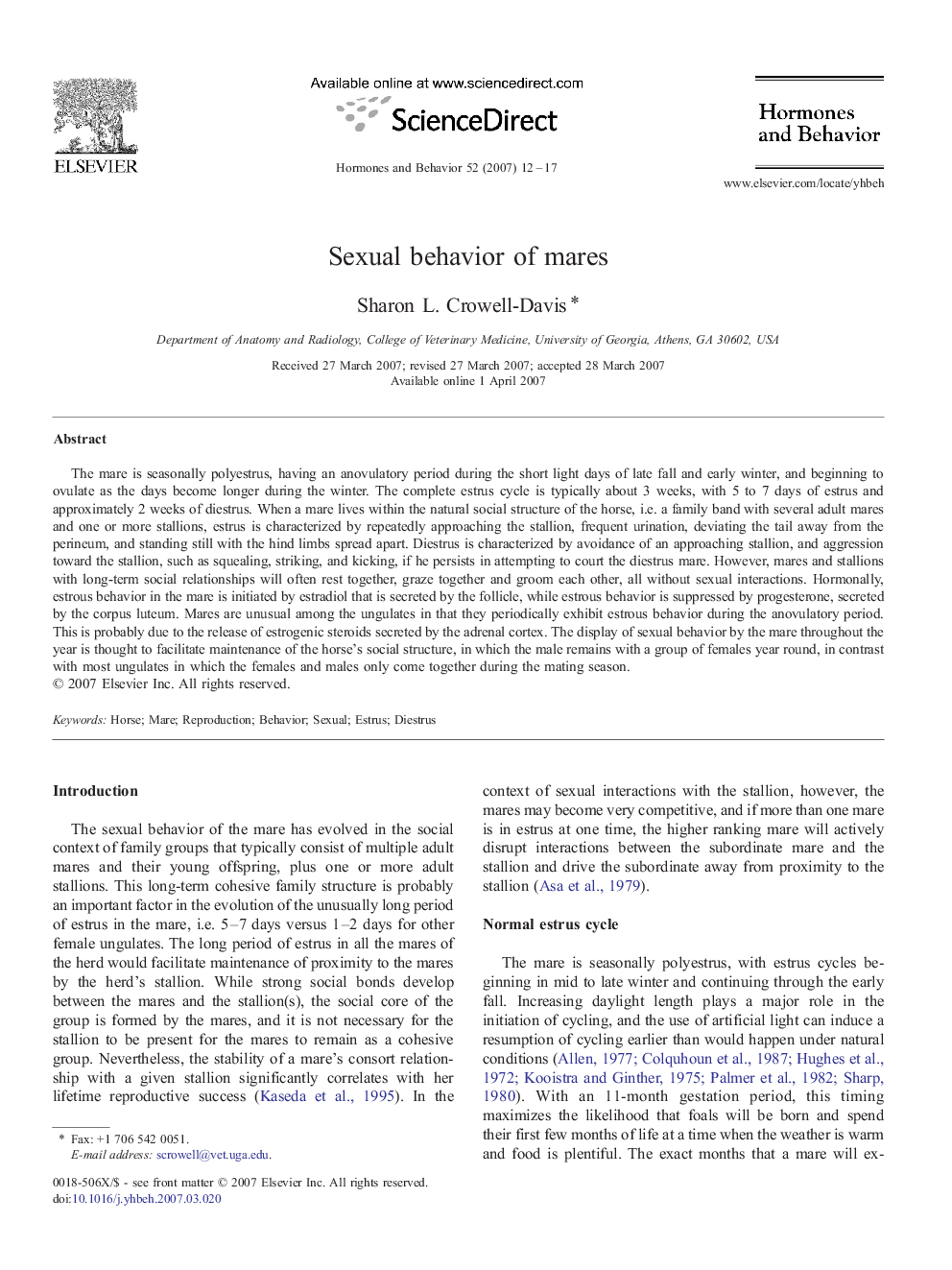| کد مقاله | کد نشریه | سال انتشار | مقاله انگلیسی | نسخه تمام متن |
|---|---|---|---|---|
| 322963 | 540300 | 2007 | 6 صفحه PDF | دانلود رایگان |

The mare is seasonally polyestrus, having an anovulatory period during the short light days of late fall and early winter, and beginning to ovulate as the days become longer during the winter. The complete estrus cycle is typically about 3 weeks, with 5 to 7 days of estrus and approximately 2 weeks of diestrus. When a mare lives within the natural social structure of the horse, i.e. a family band with several adult mares and one or more stallions, estrus is characterized by repeatedly approaching the stallion, frequent urination, deviating the tail away from the perineum, and standing still with the hind limbs spread apart. Diestrus is characterized by avoidance of an approaching stallion, and aggression toward the stallion, such as squealing, striking, and kicking, if he persists in attempting to court the diestrus mare. However, mares and stallions with long-term social relationships will often rest together, graze together and groom each other, all without sexual interactions. Hormonally, estrous behavior in the mare is initiated by estradiol that is secreted by the follicle, while estrous behavior is suppressed by progesterone, secreted by the corpus luteum. Mares are unusual among the ungulates in that they periodically exhibit estrous behavior during the anovulatory period. This is probably due to the release of estrogenic steroids secreted by the adrenal cortex. The display of sexual behavior by the mare throughout the year is thought to facilitate maintenance of the horse's social structure, in which the male remains with a group of females year round, in contrast with most ungulates in which the females and males only come together during the mating season.
Journal: Hormones and Behavior - Volume 52, Issue 1, June 2007, Pages 12–17